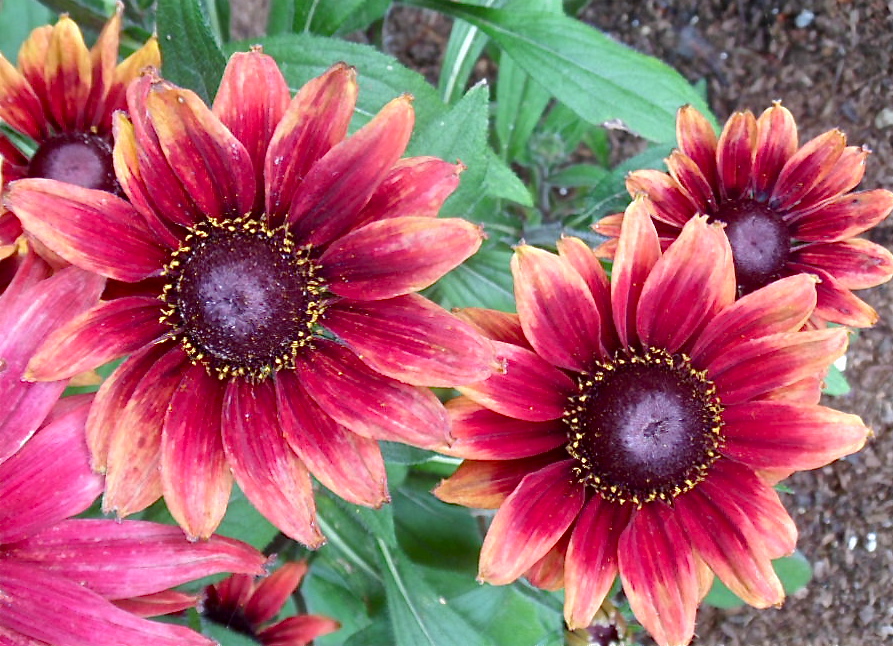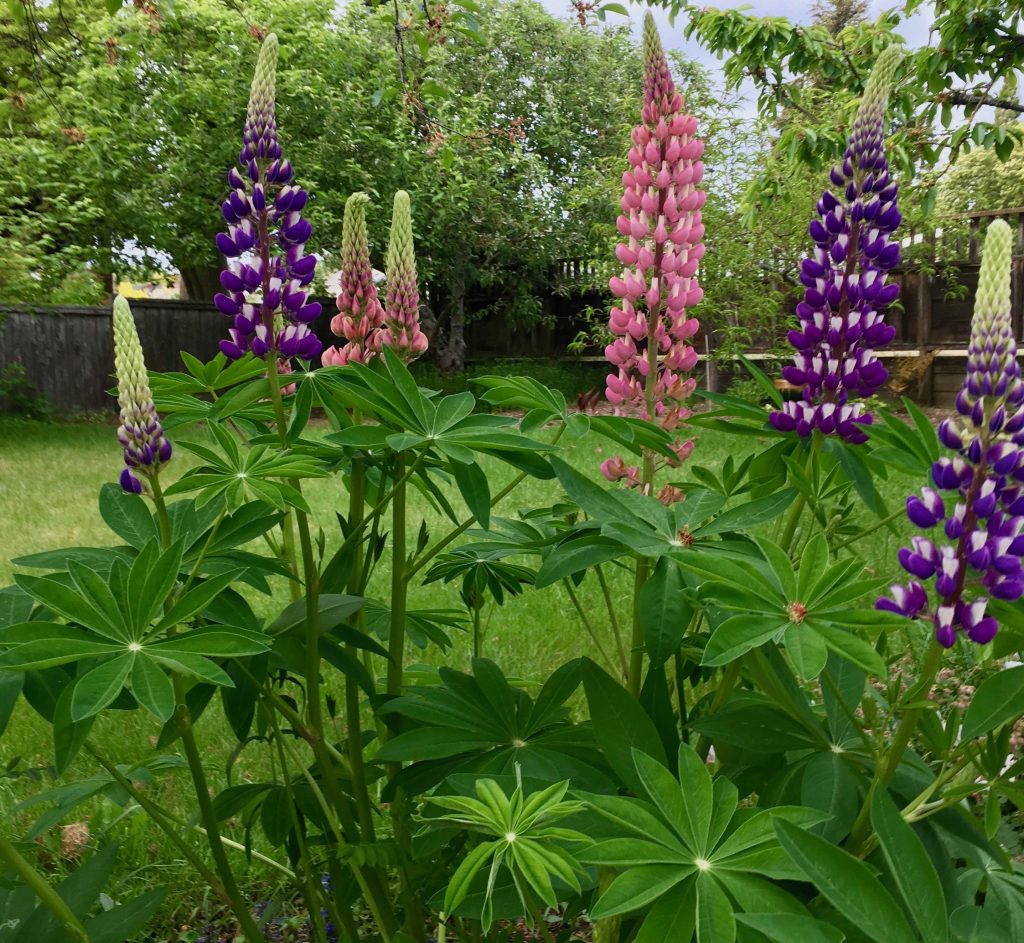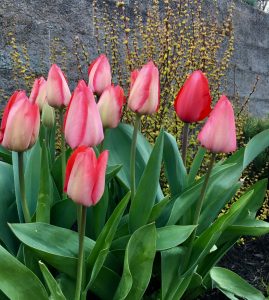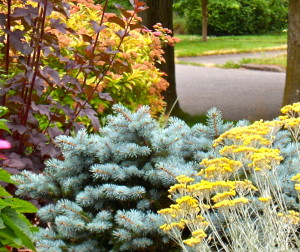The winter months are the dormant season for most plants here in the Pacific Northwest, so it can be easy to overlook what a landscape has to offer. Still, reliable favorites like Hellebore, Sarcococca (Sweet Box), Snow Drops and Witch Hazel have been in full bloom since the beginning of the year. These plants are excellent choices near entries or frequently used pathways where you will see them even on dark, rainy days.
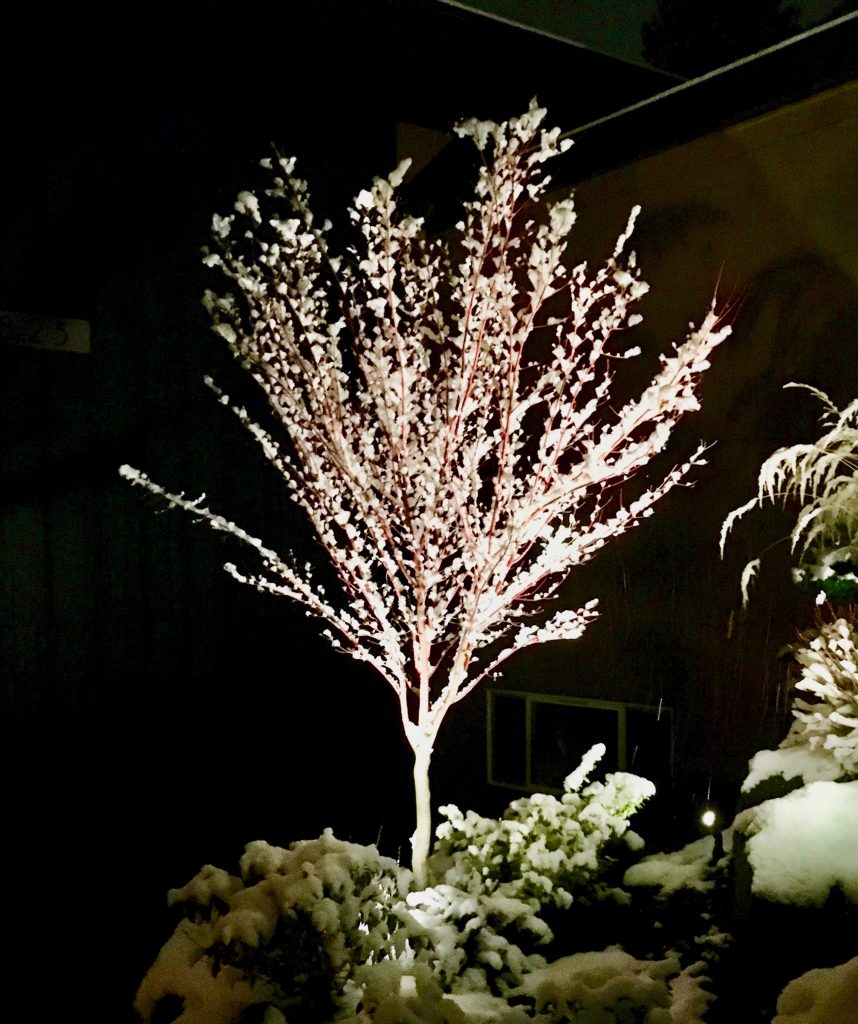
While you may not be outdoors as much as you would like, you can still see and enjoy your garden from inside your home. This is a good time to think about the views and how to make the most of them. Landscape lighting can enhance focal areas and extend viewing time while creating some interesting after-hours effects. You can add depth and character to your garden with something as simple as strategically placed uplighting on the peeling bark of a specimen tree or wash lighting on a plant with big leaves that create dramatic shadows. Lighting can open up a nighttime world in your back yard.
Here are a few ideas for using accent lighting outside your home. In a woodland setting, I use lighting sparingly and prefer soft, muted effects. Washing the trunk and primary branches of a mature Douglas fir provides ambient lighting throughout the garden. An uplight focused on the canopy of a Japanese maple provides a focal point and sense of scale in the garden at night. Whether your landscaping is modern, natural or traditional in style, lighting can enhance and define it at night.
Consider using low-voltage LED lighting, which can be installed without involving an electrician — all it requires is a nearby electrical outlet. It’s simple to position lights exactly where they need to be for optimal affects and to move them around later as plants grow and your garden changes.
When I’m designing garden lighting, I consider the style, location and size of the garden. I take into account needs such as security, safety, ambient light, focal points and dramatic effects. Primarily, it’s a matter of deciding what kind and how much lighting supports the form and the function of your garden.
Winter is a good time to look at your current outdoor lighting. Does it meet to your needs for safety and security? Is it harsh or distracting? Does it flatter and enhance your garden at night? Now is a good time to get started on lighting and other outdoor improvements so you can enjoy them this summer.
I hope this blog post helps you get started thinking about enhancing your garden with lighting. If you need more ideas, contact me for a design consultation and learn about lighting, design or the best plants for any spot in your garden.


